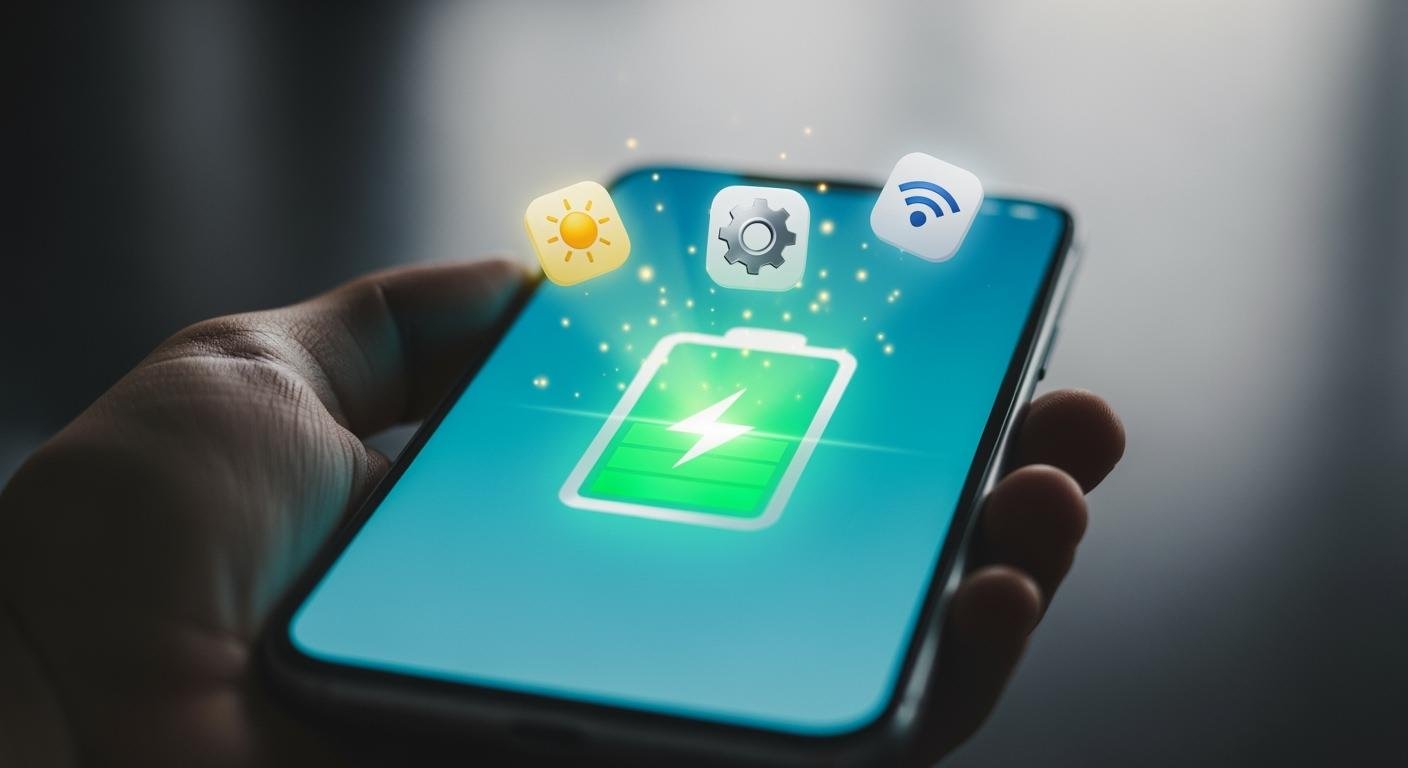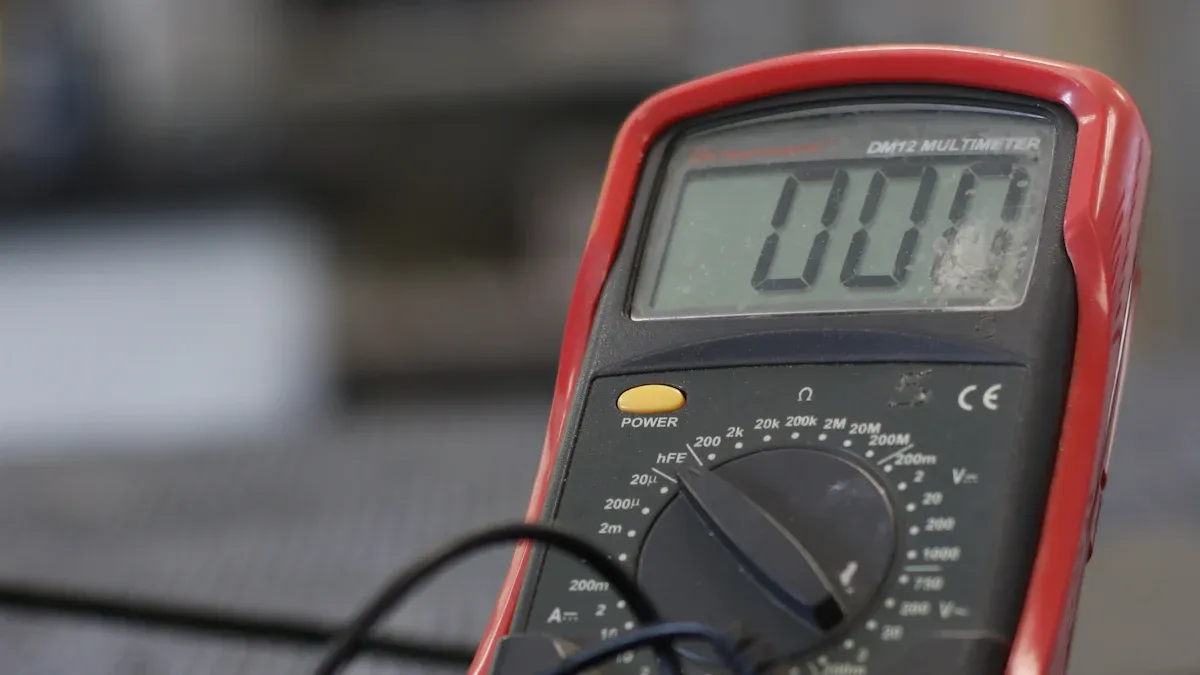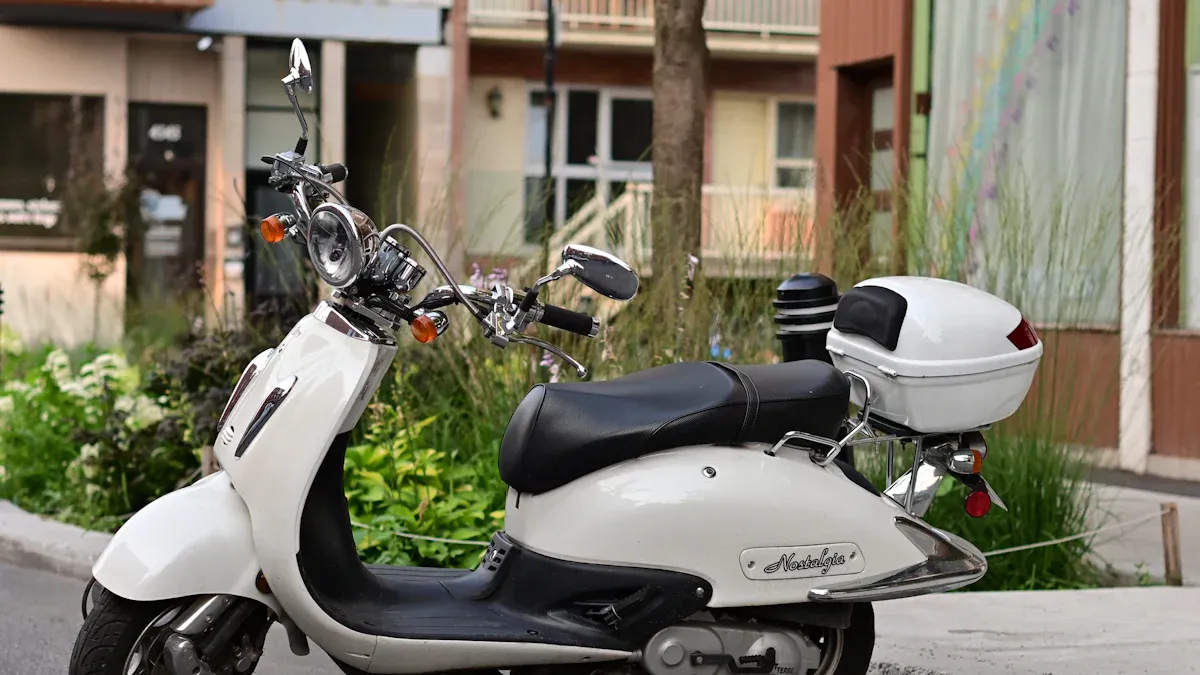
You want to improve battery life for your electric scooter. Simple habits can extend battery life and keep your scooter running strong. Your battery lifespan is limited. Most batteries only last for a certain number of cycles before they start to lose capacity.
- A typical electric scooter battery can handle 300 to 500 full charge cycles.
- After this point, capacity can drop by about 20%.
You can protect your investment with easy daily practices. These practical tips help you get the most out of every single charge.
Smart Charging to Improve Battery Life

Your charging habits directly impact your battery’s health and performance. You can significantly improve battery life by adopting a few smart routines. For daily use, a great strategy is the “20-80 rule.” This means you should try to keep your battery’s charge between 20% and 80%. This simple practice reduces stress on the battery’s components and maximizes its long-term health.
Avoid Full Depletion
You should avoid letting your battery drain to 0%. Lithium-ion batteries experience “cycling-based degradation” with every full discharge and recharge cycle. Repeatedly draining your battery completely causes significant harm.
- Reduced Capacity: Each full discharge lowers the battery’s ability to hold a charge.
- Chemical Damage: A 0% charge can cause irreversible damage to internal components.
- Shorter Lifespan: This habit can reduce your battery lifespan by 30% to 50%.
Pro Tip: Calibrate Your Battery Occasionally While you should avoid deep discharges, performing a full 0% to 100% charge cycle once every 1-3 months can be beneficial. This process helps recalibrate the battery management system (BMS), ensuring your display shows an accurate charge level. Think of it as a rare “reset,” not a regular routine.
Unplug at 100%
You might think leaving your electric scooter plugged in overnight is convenient. However, keeping the battery at a 100% charge for long periods puts it under high-voltage stress. While your scooter’s battery management system prevents immediate overcharging, this sustained stress accelerates wear.
Charging also generates heat. Leaving your electric scooter plugged in after it reaches a full charge can cause the battery to get too warm. This excess heat can degrade battery cells over time. For the best results, unplug the charger soon after the battery reaches a full charge.
Use the Original Charger
You should always prioritize the original equipment manufacturer (OEM) charger that came with your electric scooter. This charger is specifically designed for your battery’s voltage, capacity, and chemistry. Using an incompatible third-party charger can be risky. It might deliver the wrong voltage or current, which can damage your battery’s internal cells or even fry the battery management system. A mismatched charge can also void your scooter’s warranty.
Here is a quick comparison of OEM and third-party chargers:
| Feature | OEM Chargers | Third-Party Chargers |
|---|---|---|
| Compatibility | Guaranteed to work perfectly with your scooter. | May not be optimized for your specific battery. |
| Safety | Rigorously tested and certified by the manufacturer. | Safety standards can vary widely. |
| Performance | Provides the optimal charge rate for battery health. | Can charge too fast or too slow, causing damage. |
| Warranty | Covered by your scooter’s warranty. | Use may void your scooter’s warranty. |
Limit Fast Charging
Fast charging offers convenience when you are short on time. However, you should use it sparingly. The high current from a fast charge generates significant heat and places extra strain on the battery. This process can cause fragmentation of battery cells, reducing your battery’s overall capacity more quickly than a standard charge.
You should only use a fast charger if:
- Your scooter model is designed to support fast charging.
- You are using a manufacturer-approved fast charger.
- You are in a hurry and cannot wait for a standard charge.
Regularly using a standard charger is a much healthier choice for your battery in the long run.
Smart Scooter Storage

How you store your electric scooter matters just as much as how you ride it. Proper storage protects your battery from damage and ensures it’s ready to go when you are. Following a few simple rules for storage can make a huge difference in your battery’s lifespan.
Store at a Partial Charge
You should never store your battery at a full charge or a zero charge. Storing it at 100% creates stress and heat, which damages internal components. Storing it at 0% risks a deep discharge, which can permanently kill the battery. The ideal state for long-term storage is a partial charge.
Storage Sweet Spot: 40-60% Aim to keep your battery’s charge between 40% and 60% before you put your electric scooter away for more than a few weeks. This level minimizes stress and prevents the battery from draining completely.
Control the Temperature
Batteries are sensitive to extreme temperatures. Storing your scooter in a place that is too hot or too cold will permanently reduce its capacity. High heat speeds up battery aging, while freezing temperatures can cause irreversible internal damage. You should store your scooter in a cool, dry place.
| Storage Type | Ideal Temperature Range |
|---|---|
| Long-term | 32°F to 68°F (0°C to 20°C) |
| Ideal Daily | 59°F to 77°F (15°C to 25°C) |
Perform Monthly Check-ins
Your battery will slowly lose its charge over time, even when you are not using it. This is called self-discharge. For a lithium-ion battery, this can be about 1-3% per month. If you store your electric scooter for an extended period, you need to perform monthly checks.
- Check the battery’s charge level at least once a month.
- If the charge drops below 40%, top it back up to the 50% mark.
- This simple check-in prevents the battery from falling into a damaging deep discharge state.
A quick monthly check ensures your battery stays healthy and ready for your next ride.
Boost Electric Scooter Battery Life
Your riding style and maintenance habits play a huge role in your scooter’s range. You can significantly boost your electric scooter battery life with a few adjustments to how you ride and care for your vehicle. These practices reduce strain on the motor and battery, helping you travel farther on a single charge.
Ride Smoothly
How you handle your electric scooter on the road directly affects its power consumption. Aggressive riding, with quick starts and sudden stops, drains your battery much faster than a smooth, consistent riding style.
- Accelerate Gradually: Rapid accelerations demand a large amount of power from the battery. You can conserve energy by accelerating gently and smoothly.
- Brake Mindfully: Try to anticipate traffic and upcoming stops. This allows you to slow down gradually instead of braking abruptly, which wastes energy. Some electric scooter models even have regenerative braking that recovers a small amount of energy when you brake gently.
Maintaining a steady pace is another key way to improve battery life. Frequent speed changes force the motor to work harder. You can extend your range by finding a comfortable, consistent speed. For example, reducing your average speed from 20 mph to 15 mph can increase your range by 25-40%.
Use Power Modes Strategically Most electric scooter models come with different power modes. Choosing the right mode for your situation helps you balance performance and battery use.
| Power Mode | Best For | Impact on Battery |
|---|---|---|
| Eco Mode | Maximizing range on long, flat roads. | Best for battery conservation. |
| Standard Mode | Everyday commutes and balanced performance. | A good mix of power and efficiency. |
| Sport Mode | Climbing hills or needing quick acceleration. | Drains the battery the fastest. |
Check Your Electric Scooter Tires
Your tires are one of the most overlooked factors in battery efficiency. Riding on underinflated tires is a common issue that dramatically reduces your range. Underinflated tires increase rolling resistance, which means the surface area touching the ground is larger. This forces your electric scooter motor to work much harder to move forward, draining the battery more quickly.
Proper tire pressure ensures your electric scooter moves smoothly and efficiently. The average recommended pressure for an electric scooter is between 40 and 50 PSI. However, you should always check the manufacturer’s recommendation.
Pro Tip: Find the Right PSI You can find the exact recommended pressure for your tires printed on the tire’s sidewall. This number is the most accurate guide for your specific electric scooter.
You should perform regular maintenance on your tires. Check the pressure at least once a week with a tire pressure gauge. It is also a good idea to check them before any long ride. This simple habit keeps your electric scooter running efficiently and protects your tires from damage.
Handle the Battery With Care
The physical condition of your electric scooter battery is critical for both performance and safety. You should handle the battery carefully to prevent damage that could shorten its life or create a hazard. Dropping your electric scooter or its battery can cause internal damage. A severe impact can lead to a short circuit inside the battery cells, which poses a fire risk.
You should regularly inspect the battery and its compartment for any signs of trouble. Look for:
- Swelling or bulging in the battery case
- Discoloration or stains on the casing
- Any leaking fluid or unusual smells
- Smoke, even a small wisp
If you see any of these signs, stop using the electric scooter immediately and contact a professional.
Keeping the battery compartment clean is also important. You can use a soft, damp cloth to wipe away dirt and debris. This helps with heat dissipation and prevents buildup that could cause corrosion. Also, check that the battery connections are tight and secure. Loose connections can reduce efficiency and cause power loss. This simple form of regular maintenance helps to improve battery life and ensures your electric scooter is safe to ride.
You can improve battery life by focusing on three key habits: how you charge, store, and ride your electric scooter. Consistent care ensures your electric scooter delivers a reliable ride and optimal performance. These simple routines give you control, helping you get the most out of every charge and extending the life of your battery. You are now equipped to protect your investment and enjoy longer rides.
FAQ
Is it okay to charge my scooter overnight?
You should avoid charging your scooter overnight. Leaving it plugged in at 100% puts the battery under constant stress. This high-voltage state can degrade the battery cells over time. Unplug the charger soon after it reaches a full charge to protect its long-term health.
Can I ride my scooter in the rain?
You should avoid riding in heavy rain. Water can damage the battery and electrical components, even on water-resistant models. Check your scooter’s IP rating for its specific level of protection. Riding on wet surfaces also increases safety risks. Always prioritize safety and battery care.
Do I really need to follow the 20-80 rule?
Yes, you should follow this rule for daily use. It minimizes stress on the battery, significantly extending its lifespan. While charging to 100% gives you maximum range for one trip, keeping it between 20-80% ensures the battery stays healthier for hundreds of future rides.
When should I replace my electric scooter battery?
You should consider a replacement when you notice a significant drop in performance. If the battery no longer holds at least 80% of its original capacity or your maximum range is much shorter, it is likely time for a new one.

